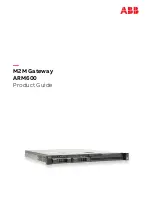
Multi-Protocol Label Switching (MPLS) Support
Overview ▀
Cisco ASR 5x00 Packet Data Network Gateway Administration Guide ▄
417
The CE does not run any MPLS protocol (LDP or RSVP-TE).
When receiving data packets in the downstream direction from the PE, the label is checked to identify the destination
VRF. Then the packet is de-encapsulated into an IP packet and sent to the session subsystem for processing.
Important:
MPLS ping/trace route debugging facilities are not supported.
Chassis as MPLS-CE Connected to ASBR
Figure 47.
Chassis as MPLS-CE Connected to ASBR
The system in this scenario uses static/dynamic MPLS labels for ingress and egress traffic. For configuration
information on static label, refer to the
Configuring BGP/MPLS VPN with Static Labels
section and refer
Configuring
BGPMPLS VPN with Dynamic Labels
for dynamic lable configuration.
This scenario differs from the MPLS-CE with PE scenario in terms of peer functionality even though MPLS-CE
functionality does not change. Like the MPLS-CE with PE scenario, MPLS-CE system maintains VRF routes in various
VRFs and exchanges route information with peer over MP-eBGP session.
The peer in this scenario is not a PE router but an Autonomous System Border Router (ASBR). The ASBR does not
need to maintain any VRF configuration. The PE routers use IBGP to redistribute labeled VPN-IPv4 routes either to an
ASBR or to a route reflector (of which the ASBR is a client). The ASBR then uses the eBGP to redistribute those
labeled VPN-IPv4 routes to an MPLS-CE in another AS. Because of the eBGP connection, the ASBR changes the next-
hop and labels the routes learned from the iBGP peers before advertising to the MPLS-CE. The MPLS-CE is directly
connected to the eBGP peering and uses only the the MP-eBGP to advertise and learn routes. The MPLS-CE
pushes/pops a single label to/from the ASBR, which is learned over the MP-eBGP connection. This scenario avoids the
configuration of VRFs on the PE, which have already been configured on the MPLS-CE.
Engineering Rules
Up to 250 virtual routing tables per context.
Up to 5000 “host routes” spread across multiple VRFs per BGP process. Limited to 6000 pool routes per chassis.
Up to 1024 VRFs per chassis.
















































